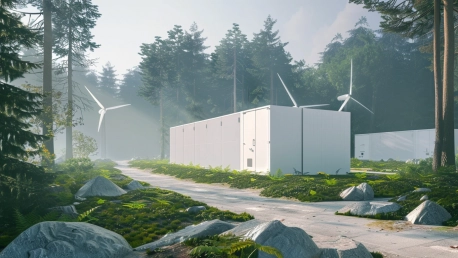Amidst the knock-on effects of climate change and the increasing pressure to hit emission reduction targets, there’s a palpable sense of urgency enveloping the power sector. Businesses, once content with business-as-usual energy strategies, are now facing up to the harsh realities of constrained power supplies. In a race against time and the elements, there’s a collective recognition that power resilience underpins the very foundation of a sustainable digital economy. This sense of resilience dovetails neatly with the emergence of Electricity 4.0 – a transformative paradigm shift echoing Industry 4.0’s digitization mantra, albeit tailor-made for the energy sector. Here, digital technologies breathe new life into electricity generation and distribution processes, bolstering growth while fortifying the backbone of energy resilience.
The Global Surge in Renewable Energy Integration
The transition to renewable energy sources (RES) is gathering remarkable momentum globally. The Global Energy Monitor’s insights reveal an ambitious path charted by various nations, eyeing significant wind and solar capacity growth by the year 2030. This push isn’t just a testament to environmental consciousness but also a strategic move by major renewable investors who clearly see the writing on the wall: the days of new gas-fired plants dominating the power landscape are numbered. The investments are substantial and far-reaching, with the MENA Power Projects Forum shedding light on projections that the power sector within the Middle East and North Africa will attract a staggering $250 billion. Key players like Saudi Arabia and the UAE are not just joining the bandwagon; they’re driving it forward, setting aside impressive funds to shepherd projects from blueprint to reality.However, it’s not all smooth sailing. The journey to a renewable-rich grid is fraught with challenges, primarily the fickle nature of energy production from these sources. MIT’s groundbreaking research underscores a critical piece of the puzzle: grid-scale energy storage solutions. And it’s not just any storage that will do the job. For grids to support a high percentage of RES, robust and resilient solutions are a must. Enter long-duration energy storage (LDES) – a contender with its own set of technical obstacles. Although pumped-storage hydroelectricity is currently at the front of the pack, there’s a trove of potential lying in wait. Meanwhile, batteries are coming into their own, celebrated for their scalability and standing front and center in the storage technology race. Other methods, like compressed air and gravity storage, along with the up-and-coming hydrogen tech, are gaining recognition for their game-changing prospects.
Digital Innovations Driving Energy Efficiency and Stability
The growing preference for microgrids is notable, especially as they become energy resilience strongholds in areas lacking renewable energy sources (RES). Far from mere backup generators, microgrids are equally skilled at energy storage for brief periods, harmonizing the highs and lows of power consumption. Propelling these developments is a wave of digital innovation, with Schneider Electric leading the charge into Electricity 4.0, advancing efficiency within intelligent grids. As society pivots toward ambitious net-zero objectives, these technological leaps are foundational to a green future. Schneider Electric’s advanced digital energy management systems serve as models for major energy consumers, enabling—and advancing—sustainable habits.As renewable energy integration becomes essential, it’s a critical step for ensuring energy resilience and achieving net-zero goals. Financial infusion is laying the groundwork for a reality wherein renewables are central to our energy matrix. Underpinning this shift is a fusion of digital ingenuity and cutting-edge storage, setting the stage for renewables to dominate our energy future.









